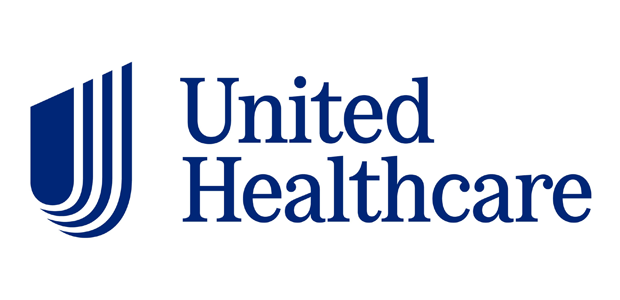Navigating the maze of provider credentialing with UnitedHealth can feel like trying to solve a Rubik’s cube blindfolded – complex, time-consuming, and sometimes frustrating. But here’s the good news: it doesn’t have to be.
 Whether you’re a newly minted physician eager to join the network, an established practitioner adding a location, or a practice manager handling credentialing for your group, this post will be your roadmap to success. We’ll cut through the bureaucratic jargon and break down UnitedHealth’s credentialing process into clear, actionable steps.
Whether you’re a newly minted physician eager to join the network, an established practitioner adding a location, or a practice manager handling credentialing for your group, this post will be your roadmap to success. We’ll cut through the bureaucratic jargon and break down UnitedHealth’s credentialing process into clear, actionable steps.
From gathering your initial paperwork to maintaining your credentials long-term, we’ll share insider tips, time-saving strategies, and crucial mistakes to avoid. Think of this as your personal credentialing GPS – helping you navigate the quickest, most efficient path to becoming a UnitedHealth network provider. Let’s transform what can seem like an overwhelming process into a manageable journey, shall we?
Before You Start: Get Your Ducks in a Row
Essential Documentation Checklist
Let’s start with what you’ll need to have ready:
- Current medical license(s)
- DEA registration (if applicable)
- Board certification(s)
- Professional liability insurance
- Work history (past 5 years)
- Education and training history
- Hospital privileges documentation
- COVID-19 vaccination status
- Current CV
- Government-issued ID
- Social Security number
- NPI number
- CAQH ProView profile (more on this in a bit)
Tip: Keep digital copies of everything. Trust me, it’ll make your life so much easier.
The CAQH ProView: Your New Best Friend
Before diving into UnitedHealth’s specific process, let’s talk about CAQH ProView. This is basically your digital professional portfolio that most insurance companies use.
Here’s what you need to know:
Getting Started with CAQH
- Register at proview.caqh.org if you haven’t already
- Complete ALL sections (yes, even the ones that seem redundant)
- Keep it updated (set a quarterly reminder)
- Authorize UnitedHealth to access your profile
Common CAQH Pitfalls to Avoid
- Letting your attestation expire (it needs to be re-attested every 120 days)
- Missing sections (incomplete profiles are a major headache)
- Outdated information (especially insurance certificates)
- Inconsistent data across different sections
The UnitedHealth Credentialing Process: Step by Step
Step 1: Initial Application
First things first – head to UnitedHealth’s provider portal (uhcprovider.com) and:
- Create an account if you don’t have one
- Navigate to the credentialing section
- Choose “New Provider Credentialing Application”
- Enter your basic information and NPI
Step 2: Primary Source Verification
This is where UnitedHealth does their homework.
They’ll verify:
- Your education
- License status
- Board certifications
- Work history
- Malpractice history
- Hospital privileges
Timeline: Usually takes 2-6 weeks
Step 3: Committee Review
Your application goes to UnitedHealth’s credentialing committee, who reviews:
- Your qualifications
- Practice patterns
- Any red flags from verification
- Compliance with UnitedHealth standards
Step 4: Final Decision
You’ll receive one of three outcomes:
- Approved
- Denied (rare if you’ve prepared well)
- Additional information requested (pretty common)
Tips for a Smooth Process
Stay Organized
Create a credentialing folder (digital or physical) with:
- Copies of all submitted documents
- Timeline of submissions
- Contact information for your UnitedHealth rep
- Notes from any conversations
- Follow-up deadlines
Be Proactive
- Don’t wait for them to contact you
- Follow up every 2-3 weeks
- Keep a log of all communications
- Save email confirmations
Common Pitfalls to Avoid
- Incomplete applications
- Expired documents
- Inconsistent information
- Missing deadlines
- Not following up
Special Situations
Adding a New Location
If you’re already credentialed but adding a location:
- Log into the provider portal
- Submit a location add request
- Provide updated practice information
- Include any new tax ID information
Group Practice Considerations
For group practices:
- Each provider needs individual credentialing
- Group tax ID must be credentialed
- Consider delegated credentialing for large groups
Recredentialing
Mark your calendar! Recredentialing happens every 3 years.
Start preparing:
- 6 months before expiration
- Update all documentation
- Check for any new requirements
Working Through Delays
Sometimes things don’t go as planned.
Here’s how to handle common issues:
When to Worry
- No response after 30 days
- Multiple requests for the same information
- Contradictory information from different reps
How to Escalate
- Contact your provider advocate
- Document all communications
- Be polite but persistent
- Use the provider portal messaging system
- Consider reaching out to your local UnitedHealth network manager
Expert Tips from the Trenches
Documentation Pro Tips
- Keep a master credentialing file
- Set up auto-reminders for expirations
- Use consistent dates and information formats
- Save everything as PDFs
- Name files clearly and consistently
Communication Strategies
- Get names and contact info for everyone you speak with
- Follow up emails with phone calls
- Keep communications clear and concise
- Document EVERYTHING
Making the Most of Your UnitedHealth Relationship
Once You’re Credentialed
- Set up your online profile completely
- Learn the claims submission process
- Understand the appeal process
- Know your contract terms
- Keep up with UnitedHealth updates
Maintaining Your Credentials
- Track expiration dates
- Update information promptly
- Maintain accurate CAQH profile
- Stay compliant with continuing education
- Monitor UnitedHealth newsletters for requirement changes
Resources and Support
Useful Contacts
- Provider Services: [Number varies by region]
- Credentialing Department: [General contact]
- Network Management: [Regional contacts]
Online Resources
- UnitedHealth Provider Portal
- CAQH ProView
- State Medical Board websites
- National Provider Identifier registry
Final Words of Wisdom
Remember, credentialing is a marathon, not a sprint. Stay organized, be patient, and maintain open communication channels.
When in doubt:
- Document everything
- Follow up regularly
- Stay professional
- Keep copies of everything
- Don’t be afraid to ask questions
Think of credentialing as an investment in your practice’s future. Yes, it can be time-consuming and sometimes frustrating, but it’s a crucial step in building a successful healthcare practice.
Quick Troubleshooting Guide
If you encounter these common issues:
Application Stuck in Process
- Check your CAQH attestation
- Verify all documents are current
- Contact your provider advocate
- Escalate if necessary
Missing Information Requests
- Respond within 48 hours
- Send information through proper channels
- Follow up to confirm receipt
- Keep copies of everything sent
System Access Issues
- Clear browser cache
- Use recommended browsers
- Contact technical support
- Document error messages
Remember, persistence and patience are key. Keep this guide handy as you navigate the credentialing process, and don’t hesitate to reach out to UnitedHealth’s provider support team when needed.
Summary
Whether you’re dealing with initial credentialing, adding a new location, or handling recredentialing, this guide offers actionable strategies and expert insights to streamline your journey. With detailed sections on troubleshooting, expert tips from industry veterans, and a thorough breakdown of required documentation, providers can approach the credentialing process with confidence.
Through an organized, systematic approach, maintaining proactive communication with UnitedHealth, healthcare providers can efficiently navigate the credentialing process while building a strong foundation for their practice’s success.

